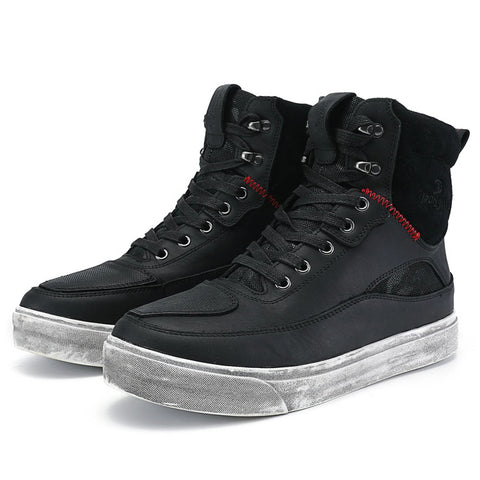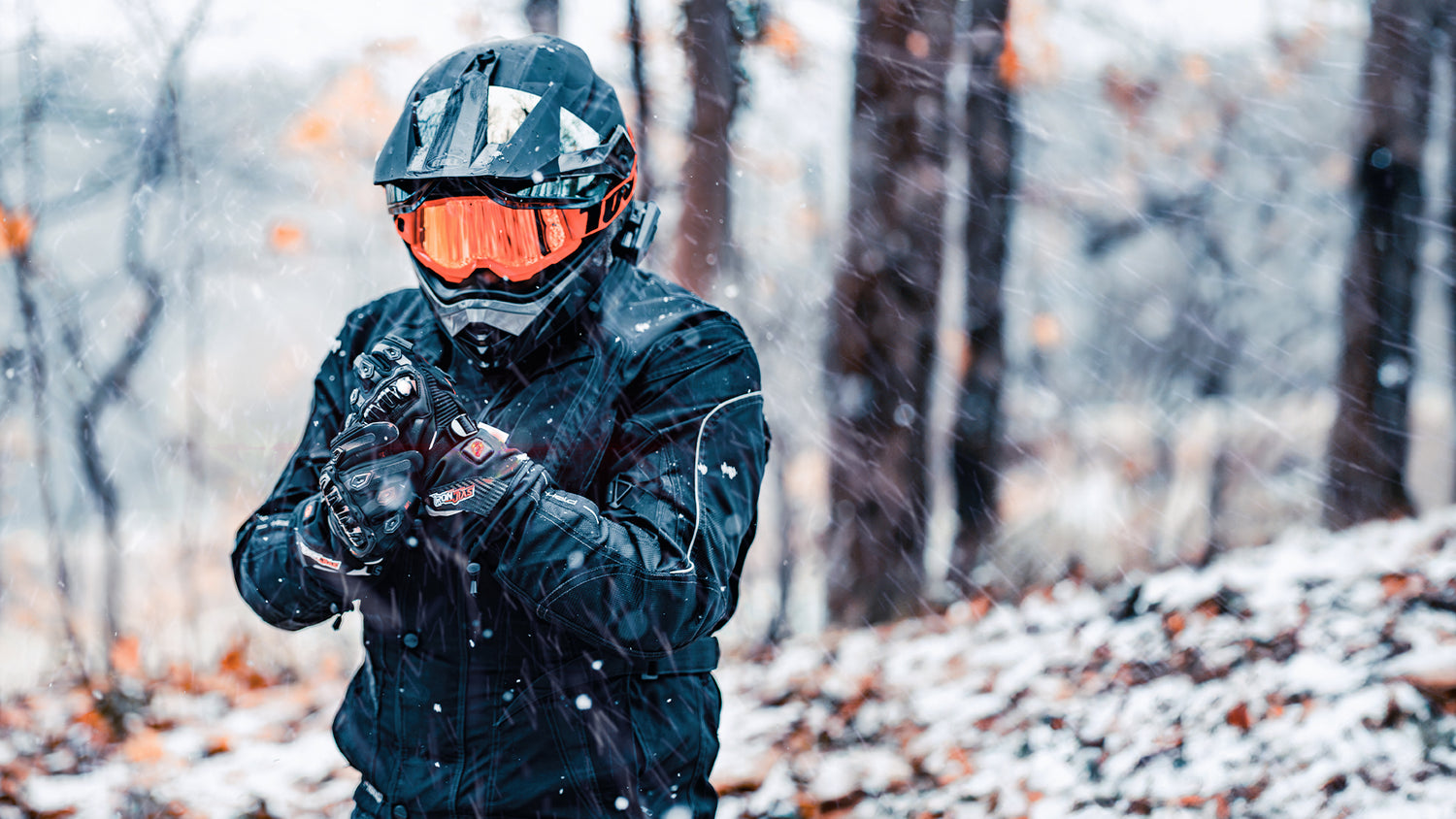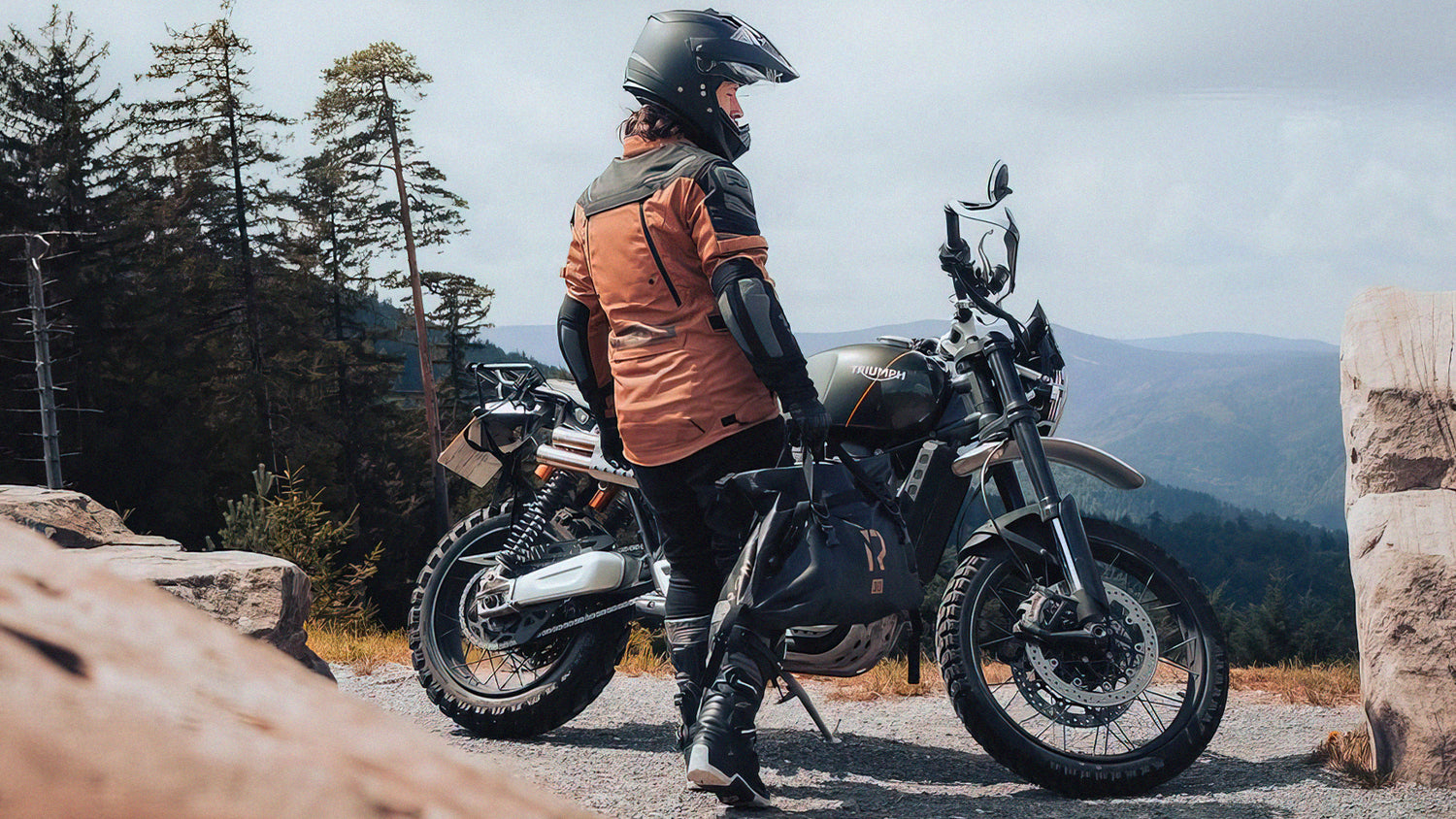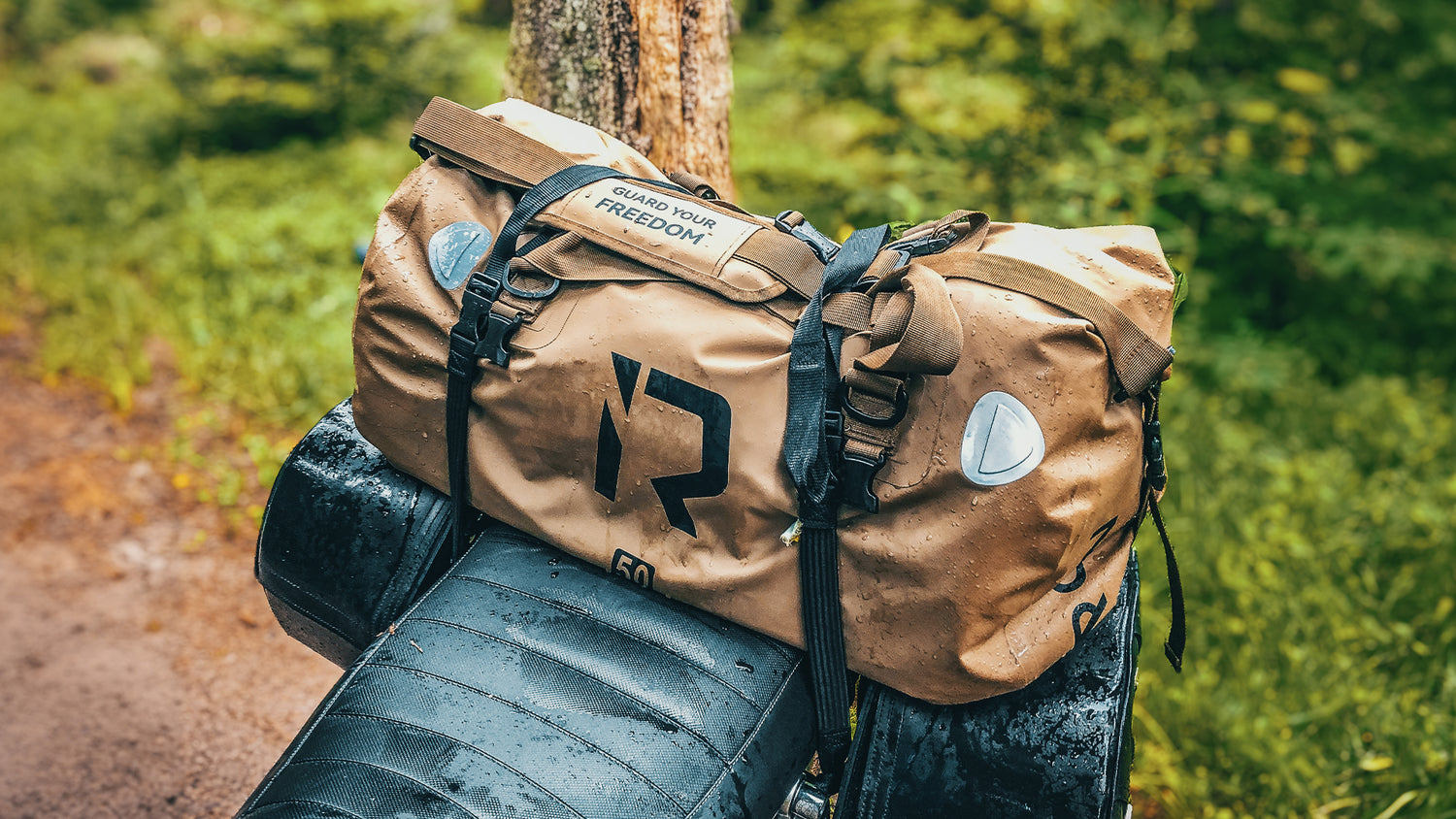Si vous comptez sur votre moto pour affronter la pluie, il est important d'avoir des chaussures de moto imperméables adaptées à votre équipement. Les bonnes chaussures gardent vos pieds au sec, améliorent la sécurité grâce à des renforts et améliorent la traction sur les surfaces mouillées.
Dans ce guide, nous aborderons les caractéristiques à rechercher dans les chaussures d'équitation imperméables ainsi que certains de nos meilleurs choix. Les meilleures options offrent un équilibre entre résistance à l'eau, respirabilité et protection contre les chocs.
Principaux points à retenir
- Les principales caractéristiques comprennent une coque extérieure résistante à l'eau, une membrane imperméable, des renforts et des semelles antidérapantes.
- Recherchez des bottes qui répondent aux normes de sécurité en matière de résistance aux chocs et à l’abrasion.
- Un nettoyage et une inspection réguliers sont importants pour maintenir l'imperméabilité et la longévité des chaussures de moto .
Pourquoi les chaussures de moto imperméables sont essentielles
Les chaussures de moto imperméables sont importantes pour votre sécurité, votre confort et votre protection contre les éléments. Les bottes imperméables vous aident à éviter l'inconfort et les problèmes de santé potentiels comme le pied des tranchées ou les infections fongiques si vous roulez souvent par temps humide.
Les bottes d'équitation imperméables sont également conçues pour protéger vos pieds de bien d'autres façons. Elles intègrent des renforts au niveau des orteils et du support de la cheville, réduisant ainsi le risque de blessure en cas d'accident. Une meilleure traction sur les surfaces mouillées améliore également le contrôle du vélo.
Principales caractéristiques à rechercher dans des chaussures d'équitation imperméables
Lorsque vous magasinez, regardez les éléments importants comme le matériau de la coque extérieure, la membrane imperméable et les renforts de sécurité.
Coque extérieure
La coque extérieure est la première défense qui protège vos pieds de l'humidité et des facteurs environnementaux. Des matériaux comme le cuir pleine fleur ou des alternatives synthétiques comme le polyuréthane et le TPU offrent une résistance à l'eau tout en conservant la flexibilité. Les conceptions sans coutures ou à coutures minimales réduisent les points d'entrée potentiels de l'eau.
Membrane imperméable
Les membranes imperméables sont la technologie clé pour des chaussures d'équitation résistantes à l'eau. Ces barrières spécialisées utilisent des structures microporeuses pour bloquer l'eau liquide tout en laissant passer la vapeur d'eau, garantissant ainsi que les pieds des cavaliers restent secs et confortables. Les membranes hautes performances utilisent des matériaux avec des tailles de pores conçues avec précision pour atteindre cet équilibre.
Renforts de sécurité
Les chaussures de moto imperméables intègrent des zones de renfort pour améliorer la protection, la durabilité et la sécurité des motards. Ces zones sont placées stratégiquement dans les zones à forte usure comme la zone des orteils, le contrefort du talon et le support de la cheville. Les fabricants de chaussures de moto utilisent des matériaux comme le polyuréthane thermoplastique (TPU), la fibre de carbone et le nylon haute densité pour ajouter de la rigidité et de la structure.
Notre meilleur choix pour les bottes d'équitation imperméables : XZ007
Les bottes de moto imperméables XZ007 offrent une protection et un style haut de gamme aux passionnés de moto. Ces chaussures montantes sont dotées d'une couche imperméable et d'une conception de fermeture éclair unique, ce qui facilite l'entrée et la sortie de la botte. Les chaussures ont un aspect vieilli, ce qui signifie qu'elles s'adaptent parfaitement à une moto.
Les caractéristiques techniques comprennent un embout renforcé avec un coussinet de changement de vitesse en fibre ultra-fine, une coque de protection en PP pour la cheville et le talon et une semelle extérieure en caoutchouc antidérapante et résistante à l'abrasion. Les bandes réfléchissantes au talon améliorent la visibilité nocturne.

Quels sont les différents types de bottes de moto imperméables ?
En faisant vos achats, vous trouverez différentes options de chaussures de moto qui peuvent résister à la pluie et aux environnements humides.
- Aventure/Touring : Conçu pour la conduite longue distance et l'utilisation hors route, offrant un équilibre entre protection et confort.
- Sport et course : axé sur la performance et la protection pour la conduite à grande vitesse et l'utilisation sur piste.
- Cruiser : Conçu pour le confort et la tenue décontractée, souvent avec un look classique ou vintage.
- Dual-Sport : bottes polyvalentes adaptées à la conduite sur route et hors route.
- Rue ou urbain : Conçu pour un usage quotidien, alliant style et protection de base.
- Motocross : Spécialisé pour la conduite tout-terrain avec une protection et une flexibilité améliorées.
- Hiver/Thermique : Bottes isolées pour rouler par temps froid.
- Touring ou Commuter : axé sur le confort pour les longs trajets ou l'utilisation quotidienne, avec des caractéristiques d'étanchéité.
- ADV/Enduro : Bottes robustes conçues pour la conduite aventureuse sur divers terrains.
Les chaussures de moto sont le meilleur choix si vous voulez quelque chose qui s'adapte au style urbain tout en offrant une bonne protection pour la conduite. Sachez que vous aurez moins d'options si vous avez besoin de chaussures 100 % imperméables, car de nombreuses options sont simplement résistantes à l'eau.
Comment choisir la bonne chaussure de moto imperméable
Alors, comment choisir la bonne chaussure de vélo ? Tenez compte du type de vélo que vous pratiquez, de la fréquence à laquelle vous roulez et des conditions de conduite moyennes.
Type d'équitation
Les chaussures de moto imperméables doivent être choisies en fonction de votre style préféré et des conditions de conduite habituelles. Si vous êtes plutôt un pilote sportif, vous voudrez peut-être des chaussures avec des embouts renforcés, une protection de la cheville et une excellente adhérence pour un contrôle précis. Les amateurs de tourisme peuvent utiliser des chaussures de conduite confortables dotées de membranes imperméables et d'un amorti suffisant pour les longs trajets. Et si vous êtes un cycliste urbain, vous préférerez peut-être des chaussures basses qui équilibrent protection et facilité de marche.
Fréquence de conduite
La fréquence de vos déplacements joue un rôle important dans le choix du type de chaussures de moto imperméables que vous choisirez. Les usagers quotidiens et les conducteurs fréquents doivent investir dans des bottes hautes performances fabriquées avec des matériaux résistants et des systèmes avancés de gestion de l'humidité. Ces options offrent une protection supérieure contre l'exposition persistante aux conditions routières et aux éléments météorologiques.
Les motards occasionnels et les motards du week-end peuvent trouver des options imperméables de milieu de gamme adaptées à leurs besoins. Bien que moins robustes que leurs homologues haut de gamme, ces bottes offrent néanmoins une protection et un confort adéquats pour les excursions sporadiques.
Conditions de conduite
Enfin, pensez à la quantité de pluie que vous allez subir pour déterminer le niveau d'imperméabilité approprié. Une chaussure résistante à l'eau pourrait par exemple convenir à votre situation. Cela pourrait être le cas si votre région connaît des précipitations modérées et que vous préférez rouler par temps clair.
En revanche, si vous utilisez votre vélo pour vous déplacer dans une ville pluvieuse, vous roulerez dans des conditions humides. De plus, vous ferez des arrêts fréquents et vous risquez de marcher dans quelques flaques d'eau. Dans ce cas, vous aurez besoin de chaussures entièrement imperméables sur lesquelles vous pourrez compter.
Quelles considérations de sécurité s’appliquent aux chaussures d’équitation imperméables ?
Lorsque vous envisagez des caractéristiques de sécurité pour les chaussures d'équitation imperméables, vous voudrez rechercher la certification CE, qui garantit qu'elles répondent aux normes de sécurité européennes.
La protection contre les impacts, notamment au niveau des chevilles et des orteils, est essentielle pour se prémunir contre les collisions potentielles. Privilégiez les chaussures dotées d'éléments réfléchissants améliorant la visibilité et de semelles anti-torsion qui assurent la stabilité et préviennent les blessures à la cheville en cas de chute.
Certification CE
Les chaussures de moto imperméables certifiées CE offrent des caractéristiques de sécurité essentielles pour les motards sur le marché européen. La certification, basée sur le règlement de l'Union européenne relatif aux équipements de protection individuelle, garantit que les chaussures répondent à des normes de protection strictes.
Le processus de certification implique des tests rigoureux, notamment :
- Évaluation de la résistance aux chocs pour la protection des orteils et du talon
- Évaluation de la résistance à l'abrasion des matériaux de la tige, de la semelle et des côtés
- Essais de rigidité structurelle pour éviter les blessures par écrasement
Ces évaluations simulent des scénarios d'accident réels, offrant aux motards la confiance dans leurs chaussures de moto protectrices . Les bottes de moto certifiées CE doivent également répondre à des exigences spécifiques de résistance à l'eau, garantissant des pieds secs dans diverses conditions météorologiques.
Protection contre les impacts
Les chaussures de moto imperméables privilégient la protection contre les chocs pour protéger les pieds et les chevilles des motocyclistes en cas d'accident ou de collision. Les composants renforcés, notamment les embouts, les talonnettes et les supports de cheville, absorbent et répartissent efficacement les forces d'impact. Des matériaux avancés comme la mousse haute densité, les inserts en gel et les systèmes d'amortissement d'air améliorent les capacités d'absorption des chocs.
Les cyclistes doivent rechercher des modèles dotés de protections de cheville internes ou externes en plastique rigide ou en matériaux composites pour éviter tout mouvement excessif des articulations lors des impacts. Les semelles renforcées avec des bandes antidérapantes offrent une traction et une stabilité essentielles, minimisant ainsi les risques de glissade et de chute.
Visibilité
Les éléments améliorant la visibilité sont essentiels pour la sécurité du cycliste portant des chaussures de moto imperméables, en particulier dans des conditions de faible luminosité ou de mauvais temps. Des éléments réfléchissants placés stratégiquement sur les chaussures augmentent la visibilité du cycliste auprès des autres usagers de la route.
Les conceptions de sécurité efficaces intègrent des bandes réfléchissantes le long du talon et des côtés, des logos ou des éléments de marque rétroréfléchissants et des accents lumineux ou phosphorescents sur la semelle. Ces composants améliorant la visibilité fonctionnent en conjonction avec d'autres équipements de conduite pour créer un système de sécurité complet.
Semelles anti-torsion
Les semelles anti-torsion augmentent la sécurité des chaussures d'équitation imperméables en offrant une stabilité et en empêchant la rotation du pied lors d'impacts ou de mouvements brusques. En d'autres termes, votre pied reste sur les repose-pieds, réduisant ainsi le risque de blessure lors de secousses ou de collisions.
Les principales caractéristiques des semelles anti-torsion sont les suivantes :
|
Fonctionnalité |
Fonction |
|
Motif de bande de roulement |
Maximise la traction sur les repose-pieds |
|
Bords renforcés |
Empêche la déformation de la semelle |
|
Semelle intermédiaire rigide |
Résiste aux forces de torsion |
|
Insertion de tige |
Assure une stabilité longitudinale |
Les sculptures de la bande de roulement, essentielles pour le contact des repose-pieds dans des conditions humides, utilisent des composés de caoutchouc durables et à haute friction pour une excellente adhérence. Les bords renforcés et les semelles intermédiaires rigides collaborent pour résister aux forces latérales qui pourraient provoquer un glissement du pied. Les inserts de tige, généralement fabriqués à partir de matériaux rigides comme le nylon ou l'acier, s'étendent sur toute la longueur de la semelle, offrant une stabilité supplémentaire et empêchant la torsion longitudinale.
Comment prendre soin des chaussures d'équitation
Pour entretenir vos chaussures d'équitation imperméables, vous devrez vous concentrer sur trois domaines clés : le nettoyage, le conditionnement et l'inspection.
Nettoyage
Un nettoyage et un entretien adéquats sont essentiels pour préserver l'imperméabilité des chaussures d'équitation. Commencez par retirer les débris à l'aide d'une brosse douce ou d'un chiffon humide. Pour les taches tenaces, utilisez des nettoyants écologiques en les appliquant délicatement à l'aide d'une éponge. Après le nettoyage, restaurez le revêtement imperméable avec un spray ou une crème spécialisée. Ce procédé permet de maintenir l'imperméabilité et de prolonger la durée de vie des chaussures.
Conditionnement
L'entretien des chaussures d'équitation imperméables est essentiel pour prolonger leur durée de vie et conserver leurs propriétés protectrices. Le processus commence par un nettoyage et un séchage minutieux des chaussures. Un agent imperméabilisant spécialisé, adapté à la composition du matériau de la chaussure, doit être appliqué à l'aide d'un applicateur souple. Le conditionneur doit être appliqué sur toute la surface, en accordant une attention particulière aux zones à forte contrainte et aux coutures.
Pour les chaussures en cuir, un baume nourrissant ou un lubrifiant conçu pour les peaux d'animaux peut prévenir le dessèchement et les fissures. L'application doit être prudente pour éviter d'obstruer les pores du matériau.
Les chaussures synthétiques bénéficient d'un traitement à base de silicone qui préserve la respirabilité.
Inspection
L'inspection et l'entretien réguliers des chaussures d'équitation sont essentiels pour la sécurité du cavalier et la longévité de l'équipement. Examinez vos bottes ou chaussures avant et après chaque utilisation, en vous concentrant sur les composants clés tels que les semelles extérieures, les tiges et les barrières imperméables. De temps en temps, testez la durabilité de la chaussure. Vous pouvez essayer de fléchir la semelle pour détecter une perte de rigidité et tester la coque imperméable.
Les meilleures chaussures d’équitation imperméables : conclusion
Vous avez maintenant une bonne idée des chaussures de moto imperméables. N'oubliez pas de privilégier les caractéristiques clés telles que l'imperméabilité, la respirabilité et la protection lors du choix de votre paire.
Tenez toujours compte de votre style de conduite et du terrain lorsque vous choisissez entre différents types de chaussures. Bien entendu, n'oubliez pas d'entretenir correctement vos chaussures pour prolonger leur durée de vie.
Avec les bonnes chaussures de conduite imperméables, vous serez préparé à toutes les conditions météorologiques que vous rencontrerez sur la route.
Chaussures de moto imperméables : FAQ
Vous trouverez ci-dessous quelques questions fréquemment posées sur les chaussures d’équitation imperméables.
Combien de temps dure généralement le revêtement imperméable des chaussures d’équitation ?
Vous constaterez que le revêtement imperméable dure généralement un à trois ans avec une utilisation régulière. Cependant, l'entretien du revêtement est essentiel. Vous devez réappliquer les traitements d'imperméabilisation chaque année ou chaque fois que vous remarquez une diminution de l'imperméabilité pour maintenir des performances idéales.
Y a-t-il des inconvénients à porter des chaussures d’équitation imperméables ?
Les chaussures entièrement imperméables peuvent présenter certains inconvénients. Par exemple, les problèmes de respirabilité peuvent entraîner une augmentation de la transpiration des pieds. La barrière imperméable qui empêche l'eau de pénétrer peut également restreindre la circulation de l'air, ce qui peut entraîner une gêne lors d'un port prolongé ou dans des conditions plus chaudes.
Puis-je ressemeler mes chaussures d'équitation imperméables si la bande de roulement s'use ?
Vous pouvez envisager de ressemeler vos chaussures, mais cela peut s'avérer compliqué avec les modèles imperméables. La membrane imperméable complique le processus. Pensez à consulter un cordonnier spécialisé ou à contacter le fabricant pour obtenir des conseils spécifiques sur le ressemelage de votre paire en particulier.
Les chaussures d'équitation imperméables sont-elles disponibles en tailles larges ou étroites ?
Vous trouverez différentes options d'ajustement pour les chaussures d'équitation. De nombreux fabricants proposent des tailles larges et étroites pour s'adapter à différentes formes de pied. Vérifiez les spécifications du produit pour connaître les désignations de largeur spécifiques telles que « E » pour large ou « B » pour étroit.





